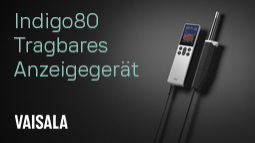Be compliant by selecting the right sterile cleanroom clothing solution
EU GMP Annex I
The new EU GMP Annex I guidelines will require sterile product manufacturers to adopt a more stringent approach to reducing contamination risks. In this article, Franck Bureth, EMEA Scientific Category Leader at Kimberly-Clark Professional™, explains how selecting the right sterile cleanroom apparel solution will help you improve compliance with the new guidelines.
The EU GMP Annex I changes are on their way and when they take effect sterile products manufacturers will have to adhere to new and more stringent regulations to minimize the risks of microbiological, particulate and pyrogen contamination. The new guidelines cover a range of areas and procedures, with a focus on “appropriate environmental cleanliness levels.” Much of the guidance concerns people and the risks they pose to sterile environments. The reason - People are the #1 source of contamination in cleanroom environment:
- People account for 46% of all particle contamination. (1)
- People shed 1 billion skin cells per day. (2)
- People generates 5 million particles greater than 0,3 μm when moving. (3)
Microorganisms introduced into a cleanroom environment need only three things to grow: moisture, food and temperature – all of which exist in a cleanroom. Therefore, all incoming air, water, chemicals and materials must be filtered or sterilized so as not to contaminate processes or products in production. The cleanroom operator also must be “filtered,” in a sense, to protect the process. This contamination risk can be mitigated by using innovative sterile single-use cleanroom apparel that protects the environment from viable particles such as bacteria and yeast, and non-viable particles such as hair and dead skin cells.
The EU GMP Annex I comes with a series of stringent guidelines which can be addressed by selecting a well-designed sterile single use cleanroom apparel solution, let’s see how:
ANNEX I – 4.10:
“Prior to use, Sterile Garments should be checked for Sterility and Packaging Integrity”
The Kimtech™ A5 sterile cleanroom apparel is the only solution on the market which is vacuum packed. The vacuum packaging is not only a way to extend the sterile validity but also acts as a visual sterility breach indicator. The Kimtech™ A5 sterile cleanroom apparel is sterile each time!
ANNEX I – 4.11:
“The clothing and its quality should be appropriate for the process and the working area. I t should be worn in such a way as to protect the product from
contamination.”
The Kimtech™ A5 sterile cleanroom Apparel is certified as Class I for particle release (Helmke Drum Test), with 96% Bacterial Filtration Efficiency (BFE) and 94% Particle Filtration Efficiency (PFE). The proprietary Clean-Donhnology ensures gowning is simple to learn and minimizes contamination during the donning process.
ANNEX I – 4.12:
“Garments for Grades A/B should be folded and packed to minimize contact with the outer surface when gowning.”
The Kimtech™ A5 sterile cleanroom apparel are uniquely configured with inside-out folding, and with arms and legs pre-drawn and snapped in position, reducing the risk of touching the outside of the suit, or any other surface while gowning and the blue line indicator is guiding the operator throughout the whole donning process.
ANNEX I – 4.16:
“The ambient temperature and humidity should be set to prevent shedding due to operators becoming too cold (leading to excessive movement) or too hot.”
The Kimtech™ A5 SMS (Spunbond/Meltblown/Spunbond) fabric provides strength, cloth-like comfort and a strong barrier for fine particles and liquids. Its middle layer acts like a filter which traps particles while maximising airflow to keep the wearer cool and comfortable. So, whilst allowing transpiration to help the body conditions remaining in the ideal condition, the fabric properties avoids the creation of a favorable environment for bacterial to proliferate in specific body areas.
The new guidance described in the EU GMP Annex I are all pointing in the same direction: contamination risk mitigation is key! To protect the process, the product and the people it’s essential to use the most relevant solutions available. Not all sterile cleanroom apparel were created equal and that’s why it’s crucial to select the right garment that controls contamination and gives workers the assurance to do their best work.
References:
(1) “The Contamination Risks Posed by Laundered Cleanroom Apparel,” Kimberly-Clark Professional™ white paper, 2014.
(2) Sandle, B. (2014). "People in Cleanrooms: Understanding and Monitoring the Personnel Factor/IVT Network , http://www.ivtnetwork.com/article/people-cleanrooms-understanding-and-monitoringpersonnel-factor.
(3) Larkin, D. (2009) "The Human Element," Controlled Environments.
Kimberly-Clark Europe
RH2 9QP Reigate Surrey
United Kingdom











